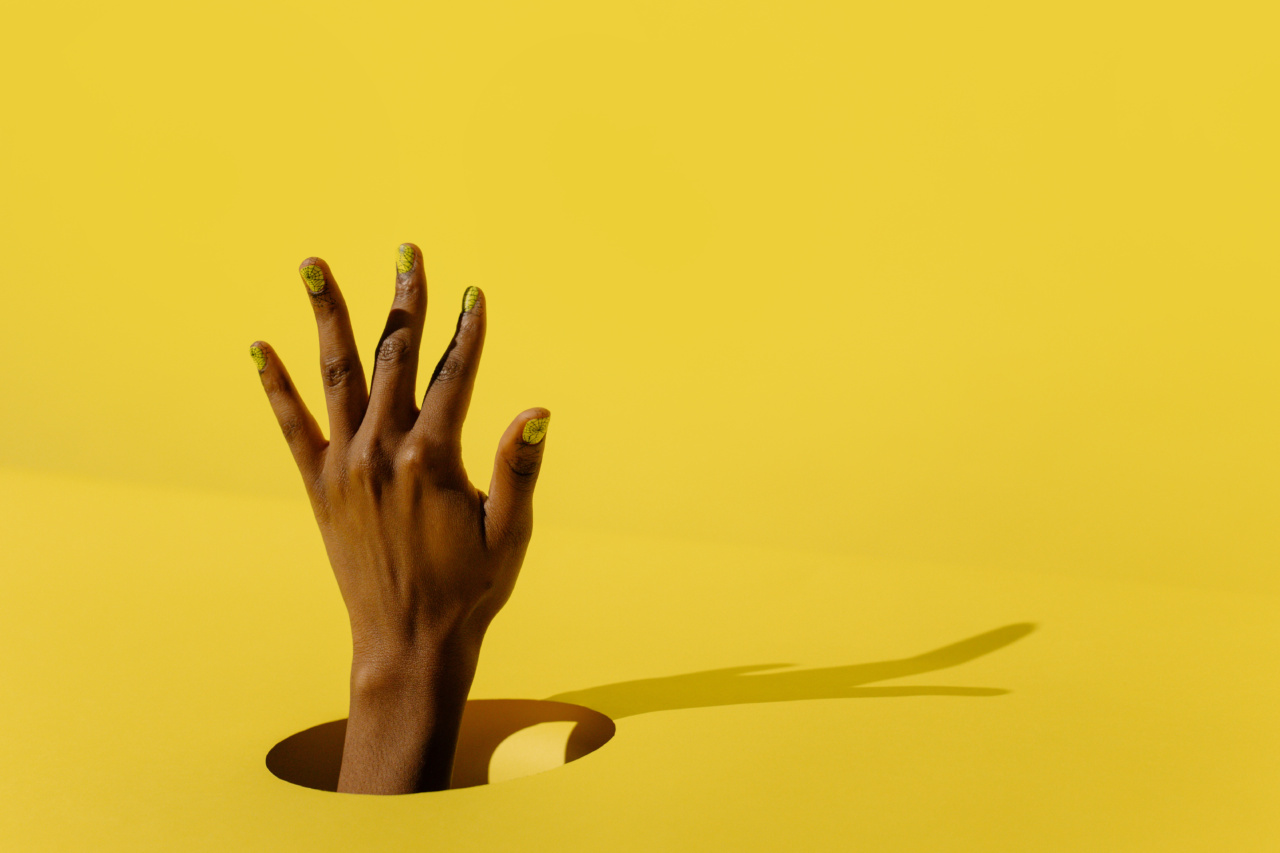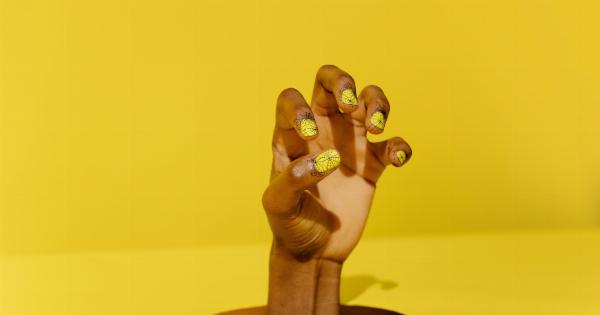Yellow nails are a common problem that can be both embarrassing and unsightly. Although they may not be a cause for concern, they can be an indication of underlying health issues or bad habits.
Understanding the causes of yellow nails is the first step towards getting rid of them. Here’s a breakdown of what causes yellow nails:.
Prolonged use of nail polish
Wearing nail polish for extended periods can cause yellowing of the nails. This is because nail polish contains chemicals like formaldehyde, toluene, and dibutyl phthalate that can discolor the nails over time if not removed properly.
To prevent yellowing of nails due to nail polish, use a base coat to protect your nails from direct contact with these chemicals, and remove the polish after a few days for a break. Also, avoid leaving the nail polish on without any breaks.
Nail fungus
Nail fungus is a type of fungal infection that can cause discoloration, thickening, and crumbling of toenails and fingernails. The infection can affect one or more nails and can be caused by different species of fungi.
One of the common types is the yellow nail syndrome, which causes the nails to turn yellow, thicken, and become crumbly. To treat nail fungus, you may need to see your doctor who will prescribe antifungal medication to kill the fungus. It is also essential to keep your nails clean and dry at all times.
Smoking
Smoking cigarettes is one of the leading causes of yellow nails. The nicotine in cigarettes stains the nails and makes them yellow over time. The chemicals in tobacco also weaken the nails which can be an invitation to other infections.
To prevent your nails from turning yellow due to smoking, try to quit smoking altogether or reduce your tobacco intake. Using a crockery or using your fingers to hold cigarettes can also make them yellow.
Health problems
Yellow nails can be a symptom of underlying health issues like thyroid problems, lung disease, liver disease and diabetes. These health problems can affect the growth and health of the nails, causing them to change in color and texture.
If you suspect that the yellow nails are a symptom of a health issue, it is important to see your doctor for an accurate diagnosis and treatment.
Aging
As we age, our nails can become yellow due to the natural aging process. The nails lose their natural color and become more brittle and fragile as we get older, causing them to change in color and texture.
Although aging is a natural process, you can keep your nails healthy and strong by eating a balanced diet, staying hydrated, and avoiding prolonged exposure to chemicals.
Poor diet
A poor diet that is deficient in essential nutrients like vitamin E, calcium, and iron can cause the nails to turn yellow.
These nutrients are vital for the growth and health of the nails, and their deficiency can weaken the nails and make them prone to infections and discoloration. To keep your nails healthy and free from discoloration, eat a balanced diet rich in essential vitamins and minerals, and drink plenty of water to stay hydrated.
Chemotherapy
Chemotherapy drugs can cause nails to become yellow and brittle. These drugs can affect the overall health of the nail bed, leading to discoloration and other changes in the nails.
The severity of the discoloration usually depends on the type of chemotherapy drug and the duration of the treatment. To manage nail discoloration due to chemotherapy, talk to your doctor about any topical treatments or supplements that can help support nail health.
Psoriasis or eczema
Skin conditions like psoriasis and eczema can also cause yellow nails. These conditions can affect the nails and cause them to turn yellow or develop spots or pits.
Although there is no cure for psoriasis or eczema, you can manage these conditions with medications and lifestyle changes. To prevent nail discoloration due to psoriasis or eczema, it is important to keep the nails moisturized and avoid activities that can damage the nail bed.
Chlorine exposure
Exposure to chlorine in swimming pools or hot tubs can cause yellow nails. Chlorine can cause the nails to lose their natural color and become yellow or green in severe cases.
To prevent nail discoloration due to chlorine exposure, use gloves when handling chlorine and wash your hands thoroughly after swimming in chlorinated water.
Conclusion
Yellow nails can be a symptom of underlying health issues or bad habits that need addressing. It is important to understand the causes of yellow nails to prevent them from occurring in the first place.
If you notice any changes in the color or texture of your nails, it is important to seek medical advice to eliminate underlying health problems or to determine if the discoloration is due to bad habits. You can prevent yellow nails by staying hydrated, eating a balanced diet, avoiding smoking and exposure to chemicals, and maintaining proper nail hygiene.































